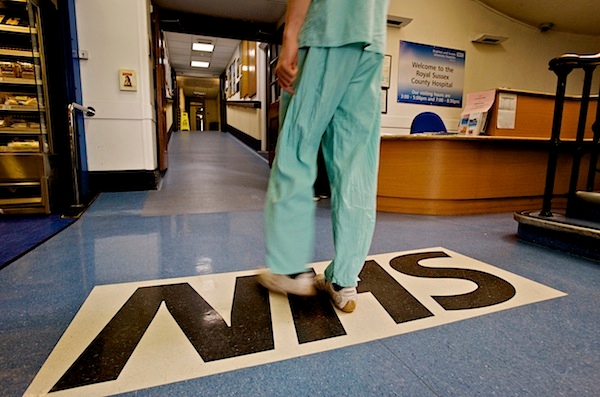With stories proclaiming ‘Crisis in the NHS’ an almost permanent rash in our media, the prospect of charging patients for GP and accident and emergency services will soon become a reality. An increasingly elderly population riddled with multiple long-term conditions combined with the hangover of continued austerity means that the numbers no longer stack up for an NHS free at the point of care.
Family doctors are said to be drawing up plans to start charging patients for evening and weekend consultations, warning ministers that they cannot fund seven-day provision within their current resources. The Times reports that GPs are planning to sidestep restrictions on charges by allowing for payments to a third party company if patients want treatment more quickly.
Actually, this option already exists online. Smartphone users can download any number of apps offering medical consultations in digital form in exchange for a monthly subscription. For instance, Babylon Health offers unlimited GPs for £5 per month or £50 per year. Introducing charges at GP surgeries takes this option into the real world, from clicks to bricks, and is as inevitable as the political row that will surely follow.
Healthcare professionals say the gradual introduction of fees for dentistry and sight tests have led to some of the biggest health gains in recent history. Having to pay to see a doctor will also have the effect of managing demand, an ability that is almost completely absent at present.
Fees for GPs are likely to be the beginning of the end for an NHS free on the frontline. To avoid shifting demand from GPs to accident and emergency, health chiefs will have no choice but to introduce a charging system for casualty departments. It is hard to see any alternative under a government that is determined not to increase spending on the NHS. Indeed, with the Opposition in such disarray, there has never been a better time for the Tories to bring in such a controversial measure.
So where does all this leave the consumer? As with dental care, patients will be able to sign up for medical plans with monthly fees paid in return for costs covered in the event of illness or treatment. Private medical insurance currently enables policyholders to jump lengthy NHS queues and receive treatment more quickly for around £50 per month for basic cover. The insurance industry will evolve to meet the challenge of delivering healthcare for an ageing population in a way that shifts the risk from the taxpayer and onto the consumer.
Where there is risk, there is profit to be made. At a wider level, investment banks have been studying ways in which they might use stratified patient data to securitise those at the greatest risk of illness, mirroring the way they bundled up and sold sub-prime mortgages in the lead-up to the financial crisis. Overweight smokers who watch daytime TV should not be surprised to find themselves in the unfortunate category of ‘sub-prime patient’.
To protect all of us against rapacious banks and insurers in this brave new world, consumers are advised to take strength from the array of wearable technologies now widely and cheaply available. These devices gather enormous amounts of data about us and the way we live, responsibly or otherwise. Healthy behaviour like 10,000 steps a day will be rewarded with lower premiums. Unhealthy behaviour will be punished with bigger bills. Just like car insurance. And as with car insurance, consumers will be advised to do their research and shop around for the best deal. And, to labour the metaphor, drive carefully.
‘Wearable technology gives us the opportunity to lead healthier lives,’ said Bryn Sage, chief executive of Inhealthcare, a digital health specialist. ‘In the very near future, it could also help us have lower insurance and medical bills.’
Bernard Ginns is founding director of www.branksomepartners.com and was Business Editor of the Yorkshire Post from 2008-16.






Comments